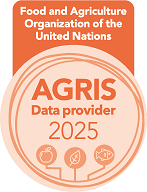Conditions of use of working equines in the rural community of Santa Rosa, Puebla, Mexico
Paper presented at the III Ibero-American Symposium on the Conservation of Local Animal Genetic Resources and Sustainable Rural Development
Keywords:
Equines, Equines of work, Work animal, Animal tractionAbstract
With the purpose of knowing the conditions of use the equines ones of work, in rural scopes, it was elaborated a census and a static diagnosis by means of survey (N=31) in the Community of Santa Rosa, Puebla. The results allowed to identify 244 proprietors of equines og work who as a whole have 421 animals that represent 16% of the total in the Municipality of Tecamachalco. In its majority they correspond to horses (91%). They are used for shot, load and transport, with periods of work of between 2 and 4 hours. It is put under to them work in early ages (1.5 years). The work party is rudimentary ("nechlaces", "palotes", "fillets" and harnesses) but the exigency in the load or shot with cart is high (50-500 kg). The value of the animal is of 300 USD. The feeding is variable (alfalfa, maize, green grass and concentrated food occasionally). The commercialization of the animals is made in the same community and the regional "tianguis". They are sold when they are incapacitated for the work. In 42% of the cases diseases were reported, whereas the wounds are little. In half of the cases animal-machinery is combined (cultivator and plow).











